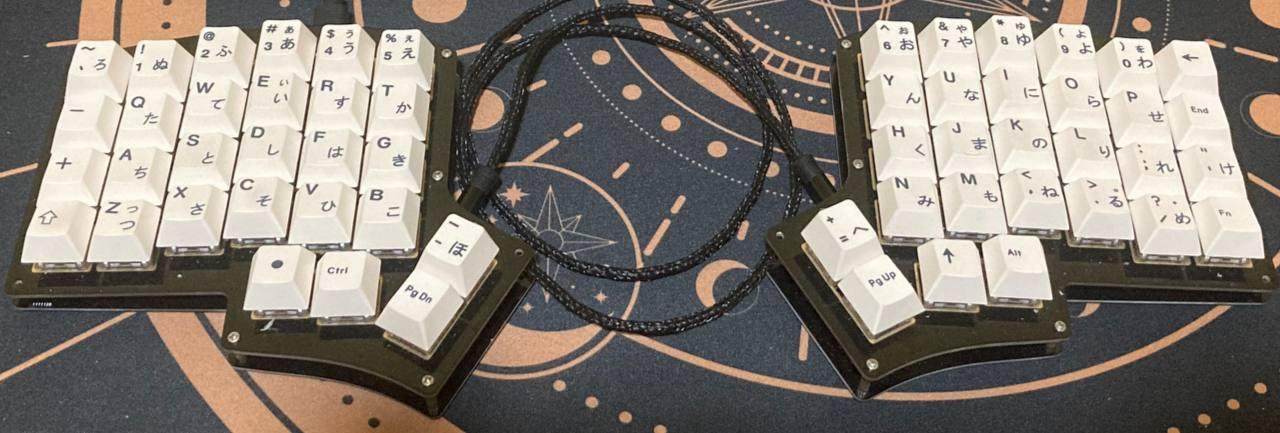I grew up learning how to type on the standard QWERTY layout, which looked something like this:

But I realised that typing on such a keyboard forces your hands to be very close to each other. This in turn makes you tend to hunch over your keyboard or roll your shoulders inwards when you type.
So in pursuit of ergonomics and also largely due to the cool factor, I bought myself a split keyboard. A split keyboard is a two-piece keyboard, so you can place the two halves as far away from each other as you want. This way, you can have each hand at their natural resting position of shoulder-width apart.
In particular, I got the Iris model. Apart from being a split keyboard, it also slightly realigned the keys such that they were in-line vertically while staggered horizontally such that the home row follows the natural curve of your fingers.

I had to relearn a lot of finger movements in this new layout. For one, I used to hit B with my right hand, but now I’m forced to use my left hand. I also used to hit C with by left index, but now I have to mentally remap that to my left middle finger.
Not to mention it has less keys than a normal keyboard, so symbols like [, ], {, and } had to be binded to chords (with my custom modifier at the right thumb: ↑).
So to type braces on my keyboard, I needed to do these:
- to get [, I press ↑ + o.
- to get ], I press ↑ + p.
- to get {, I press ↑ + Shift + o.
- to get }, I press ↑ + Shift + p.
To program the keyboard, I use qmk. It grants me full control over the keyboard, so I can do my own cool stuff like press a special key combination to play some epic music track or something.
Notice how I don’t have an enter key where it is commonly placed. I mapped the Pg Dn key at my left thumb to enter. This has given my formerly useless left thumb a new purpose, and I’ve found this one of the most pleasing changes. My keyboard layout is open-source, so feel free to check it out and make it your own.
I really enjoy the reduced hand movement as a result of the keys all being closer to the home row, coupled with the greater engagement of the thumbs. While it took some time to get used to, learning this new layout has been a rewarding experience. I got more familiar with where each key is, thanks to the more organized layout, and I can type faster on this than on a standard keyboard now.